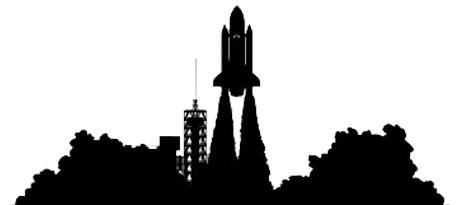Students’ overarching goal on Mission Day is to complete all required tasks and meet the primary objective without mission-compromising errors. Both missions engage and empower students by clearly defining the specific roles and responsibilities of each team. Challenger Center staff supervise the missions to ensure the students fully understand the tasks assigned to them as well as the symbiotic nature of the simulation experience.
The CCHI missions are not a form of entertainment or recreation, but rather a multi-faceted exercise in critical thinking and teamwork. The job of mission supervisors is to stimulate practical use of logic, promote independent critical thinking, and encourage self-monitoring. The actions of individual students and the effectiveness of the team as a whole will ultimately determine the success or failure of the mission.
After the mission, each student is held accountable for their performance as they discuss the experience in detail during a debriefing session back in their own classrooms. In addition to completing personal evaluations, students are evaluated by CCHI staff and classroom teachers on skills such as oral communication, reading comprehension, complex thinking, use of technology, and scientific process.
CCHI Missions
RENDEZVOUS WITH COMET HALLEY
Objective: To launch the probe to Comet Halley
RETURN TO THE MOON
Objective: To execute a successful moon landing
Team Assignments
Students are assigned to one of eight integral teams and participate in both Mission Control and in the Space Station scenarios. Participants experience the same types of tasks performed by actual NASA astronauts and mission controllers.
 |
COMMUNICATION TEAM The Communication team is responsible for transmitting verbal messages between the Space Station and Mission Control. The team sends and receives short messages and all emergency messages. |
|
 |
DATA TEAM The Data team is responsible for transmitting electronic messages between the Space Station and Mission Control. The team types and prints long messages and messages with numerical data. |
 |
ISOLATION TEAM The Isolation or Robotics Team measures hazardous chemicals, inspects solar array panels for micrometeroid damages and monitors radioactive particles in the air. Findings are then transmitted to Mission Control for analysis. |
 |
LIFE SUPPORT TEAM Life Support crewmembers are charged with performing experiments to ensure all systems are functioning properly and are safe for the Space Station crew. They test the drinking water supply, monitor the oxygen system, check various environmental conditions, and send the test results to Mission Control for analysis. |
|
 |
MEDICAL TEAM The Medical Team monitors the crewmembers’ visual and auditory reaction times, temperatures, and heart data to ensure that all crewmembers are healthy. Findings are then sent to Mission Control for analysis. |
|
 |
NAVIGATION TEAMS In the Comet Halley Mission, the Navigation Team locates Comet Halley, determines the exact location of the comet, and calculates the best density within the comet, enabling the probe to be launched. During the Moon Mission, the Navigation Team navigates the Spacecraft to leave Earth’s orbit, enter lunar orbit, and land safely on the Moon to establish a lunar base. |
|
 |
PROBE TEAM The Probe Team assembles a scientific probe that will be launched to rendezvous with Comet Halley. In the Moon Mission, data downloaded from a previous mission is analyzed by the Probe Team to determine a possible lunar landing site. In addition, Probe Team members assemble a new scientific probe that will be launched to the Moon’s surface prior to the spacecraft’s landing. |
|
 |
REMOTE TEAM The Remote Team is responsible for conducting experiments on the mass, volume, and density of meteoroids for the Comet Halley Mission. In the Moon Mission, the Remote Team studies soils for iron content, radioactivity, and potential fuel gases. In both missions, robots are used to monitor greenhouse plants in the Space Station for optimal growth. All findings are sent to Mission Control for analysis. |


